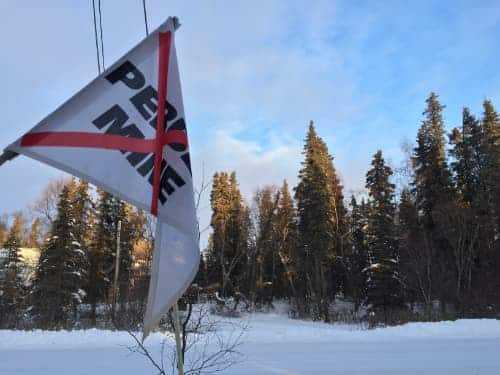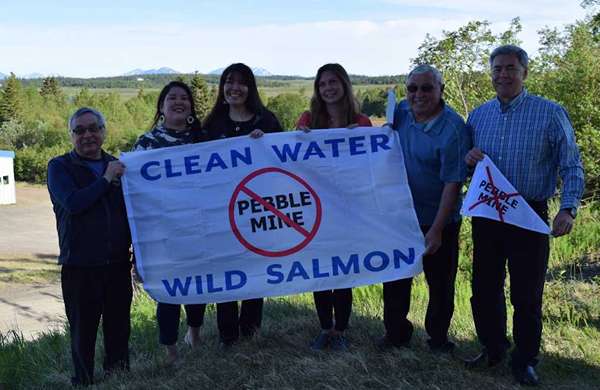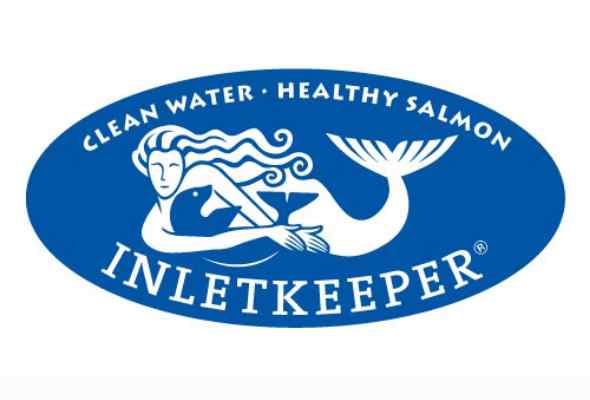“During the busiest season of the year, amidst a record-breaking salmon run, the people of Bristol Bay once again made it clear that EPA must finalize strong protections for our watershed.”

More than half a million people—including local conservation, fishing, and tribal leaders—voiced their opposition to mining in Alaska’s Bristol Bay during a public comment period for the Biden administration’s proposed regional protections that concluded Tuesday.
“We’ve done our part; it’s now up to the EPA to finally finish the job and defend Bristol Bay from the threat of Pebble Mine.”
After the Environmental Protection Agency (EPA) last year reinitiated the process of considering protections for certain waters in Bristol Bay under Section 404(c) of the Clean Water Act (CWA), the Region 10 Office announced a revised proposed determination in May.
Activists and residents who have spent the past several years fighting to safeguard the region responded by again highlighting the dangers of the proposed Pebble Mine project and any other efforts to extract copper and gold deposits at the expense of the local ecosystem.
As a letter that 122 groups sent last month to EPA Administrator Michael Regan and Casey Sixkiller, the agency’s regional administrator, explains:
Bristol Bay is home to the world’s largest wild sockeye salmon fishery, generating $2.2 billion annually, supporting 15,000 American jobs, supplying 57% of the world’s wild sockeye salmon, and sustaining Indigenous communities since time immemorial. As they have for millennia, the wild salmon returning each year to Bristol Bay ensure a way of life for Alaska Native communities, providing subsistence food, subsistence-based livelihoods, and the lifeblood of culture.
Yet the Pebble Mine would risk it all. If fully developed, the Pebble Mine would generate up to 10 billion tons of toxic mining waste. As proposed in the Pebble Limited Partnership’s (PLP) 2020 mine plan, the 20-year mine would destroy approximately 100 miles of streams and 2,100 acres of wetlands, completely decimating areas critical to Bristol Bay’s salmon fishery.
“The indisputable facts, clear science, and extensive administrative record overwhelmingly support a final 404(c) determination that protects Bristol Bay’s headwaters from not only the mine plan proposed by PLP in 2020, but any future large-scale porphyry ore mining proposed for the Pebble deposit,” the letter concludes.
Representatives from the Bristol Bay Defense Fund—a coalition of advocacy, business, and tribal groups battling Pebble Mine—echoed the letter’s points in a statement Tuesday.
“EPA has a wealth of compelling reasons to veto the Pebble Mine,” said Joel Reynolds, Western director and senior attorney for the Natural Resources Defense Council (NRDC). “This summer an all-time record of 78.4 million wild salmon returned to Bristol Bay, and over half a million people submitted comments demanding EPA action now.”
Katherine Carscallen, executive director of Commercial Fishermen for Bristol Bay, pointed out that locals made time to submit comments “while thousands of fishermen and processing workers were working hard to deliver a record-breaking 59.5 million wild sockeye salmon to the market.”
“We cannot allow one more fishing season to pass with the Pebble Mine looming over our heads,” she said, calling on the EPA to finalize CWA protections “by the end of this year.”
Hello @EPA, are you listening? 160,000 people across the US want you to #VetoPebbleMine. It’s time to permanently protect Alaska’s #BristolBay. https://t.co/hmmxyaSCpg
— Earthworks (@Earthworks) September 7, 2022
United Tribes of Bristol Bay executive director Alannah Hurley similarly stressed that “during the busiest season of the year, amidst a record-breaking salmon run, the people of Bristol Bay once again made it clear that EPA must finalize strong protections for our watershed and end the threat of Pebble Mine for good.”
Both Hurley and Tim Bristol, executive director of SalmonState, emphasized that Pebble Mine opponents have repeatedly detailed their arguments against the project to regulators.
As Bristol put it: “Tribes, fishermen, and communities worldwide have shown up and supported durable protections for Bristol Bay every single time the EPA has asked us to. We’ve done our part; it’s now up to the EPA to finally finish the job and defend Bristol Bay from the threat of Pebble Mine.”
EPA leaders, for their part, have signaled that they are determined to safeguard the area.
Regan in May called the watershed “a shining example of how our nation’s waters are essential to healthy communities, vibrant ecosystems, and a thriving economy,” while Sixkiller said that “clearly, Bristol Bay and the thousands of people who rely on it deserve protection.”
Common Dream’s work is licensed under a Creative Commons Attribution-Share Alike 3.0 License. Feel free to republish and share widely.
[content id=”79272″]







